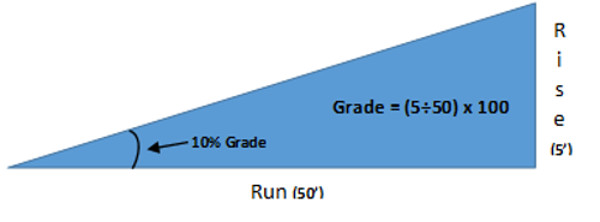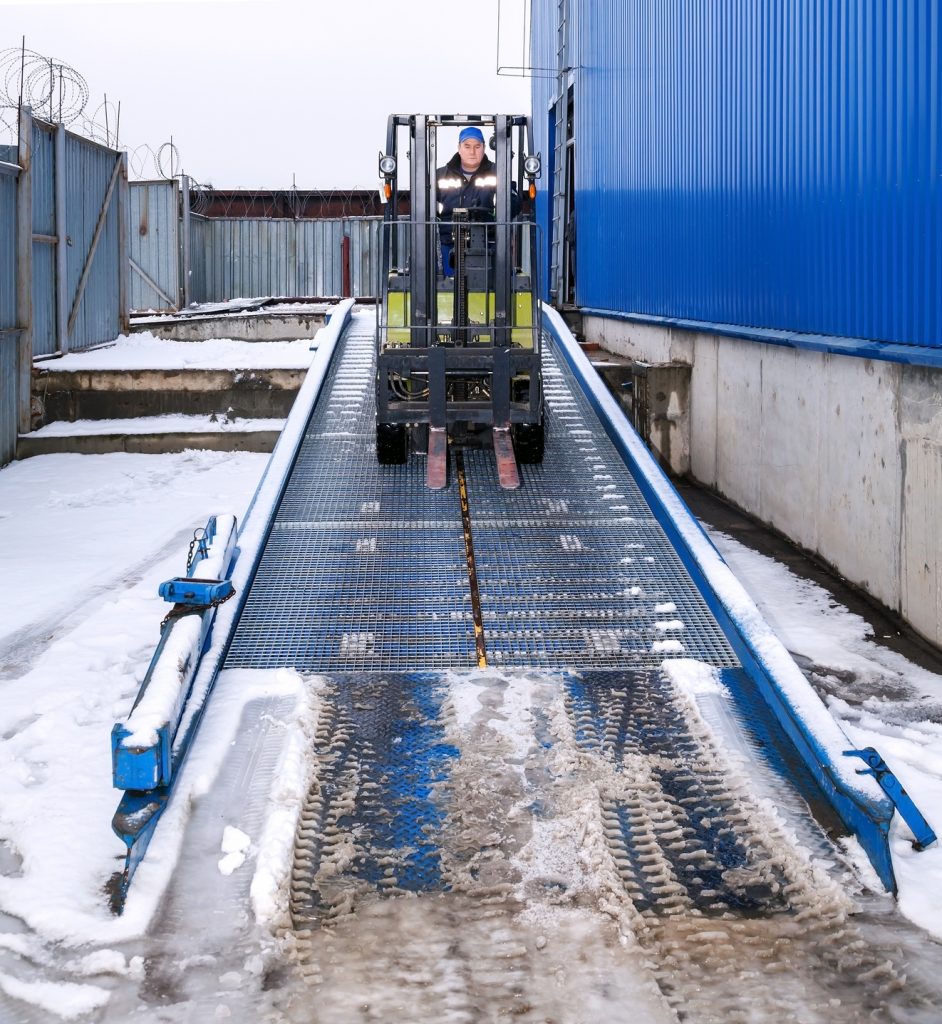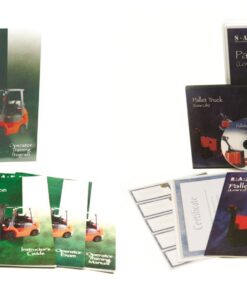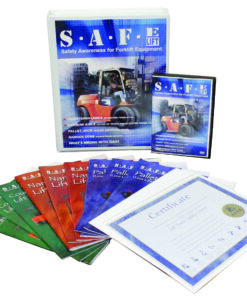Forklift Operator Safety Training
Forklift Safety on Inclines, Slopes, and Ramps
Forklift Safety on Inclines, Slopes, and Ramps
Published by
on
The topic: forklift safety on inclines, slopes, and ramps should be included in your forklift operator training. This is especially true if driving of forklift on inclines, slopes, and ramps is common practice at your place of businesses.
The following standards are taken from CFR 1910.178
- Grades shall be ascended or descended slowly [CFR 1910.178(n)(7)]
- When ascending or descending grades in excess of 10 percent, loaded trucks shall be driven with the load upgrade [CFR 1910.178(n)(7)(i)]
- On all grades the load and load engaging means shall be tilted back if applicable, and raised only as far as necessary to clear the road surface [CFR 1910.178(n)(7)(iii)]
By definition an incline, slope, or ramp is commonly defined as an angle when it is in excess of 10%.
The formula for how to determine whether or not the angle exceeds 10% is defined below:

Your forklift operators could benefit from an incline, slope, and ramp safety discussion.
Three potential hazards of omitting this discussion could include:
1. Danger of tip over
2. Danger of losing the load
3. Serious injury or death.
The following items listed are a few good talking points to include in your training program.
- Drive forward going up the ramp with a load

Traveling without a load, the forks should be pointed down the incline. - Drive in reverse coming down the ramp with a load
- If you have to drive forward and your vision is blocked, have someone direct your path
- Do not turn while on the ramp
- Always look in the direction of travel
- Maintain a safe distance from edge of ramp
- The load should be tilted back enough to stabilize the load
If you have forklift certification questions be sure to check out Ultimate Cheat Sheet For OSHA Forklift Certification
Forklift – Traveling With and Without a Load
When your operators are traveling with a load, the load should point up the incline. This would include going up or down the ramp. If the operator is not able to see (going up the ramp) then a spotter should be utilized. It is important that both the operator and the spotter are in visual contact at all times. The forks should be raised enough to safely clear the grade.
When traveling in reverse the operator should be using 360 degrees of visibility at all times. Being aware of other equipment and pedestrians is paramount. They should use low gear and slow speed. When carrying a heavy load on grade, the forklift must be able to safely stop.
When your operators are traveling without a load, the forks should be pointed down the incline. This would include going up or down the ramp. The forks should be raised enough to safely clear the grade. They should use low gear and slow speed.
NOTE: Do not travel on inclines, slopes, ramps or other conditions that exceed the manufacture’s recommendation.
If you have forklift training or aerial lift training questions, are interested in learning more about the services/products offered at First Quality Forklift Training LLC, or would like a free training quote, please call us at (800) 647-FQFT (3738) or email us at [email protected] . We look forward to hearing from you





This is a great article. Inclines and slopes are a forgotten topic amongst trainers.
Thank you for the comment. You are absolutely correct. Many of those attending my train-the-trainer class have an aha moment, especially when I discuss this during the forklift stability section of my training. In fact, that is the one of the leading reasons I chose to write about this topic.
I will share this article with co forklift operators. To ensure the safety of my mates.